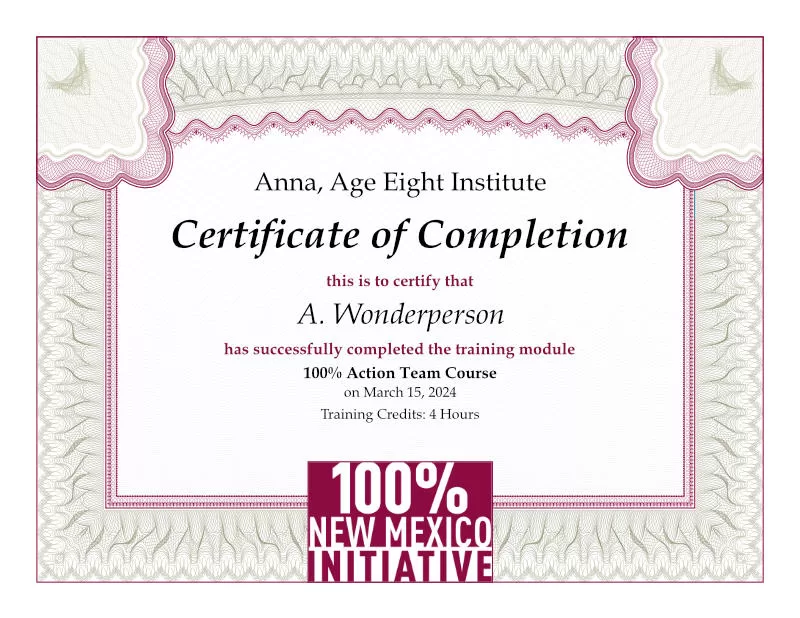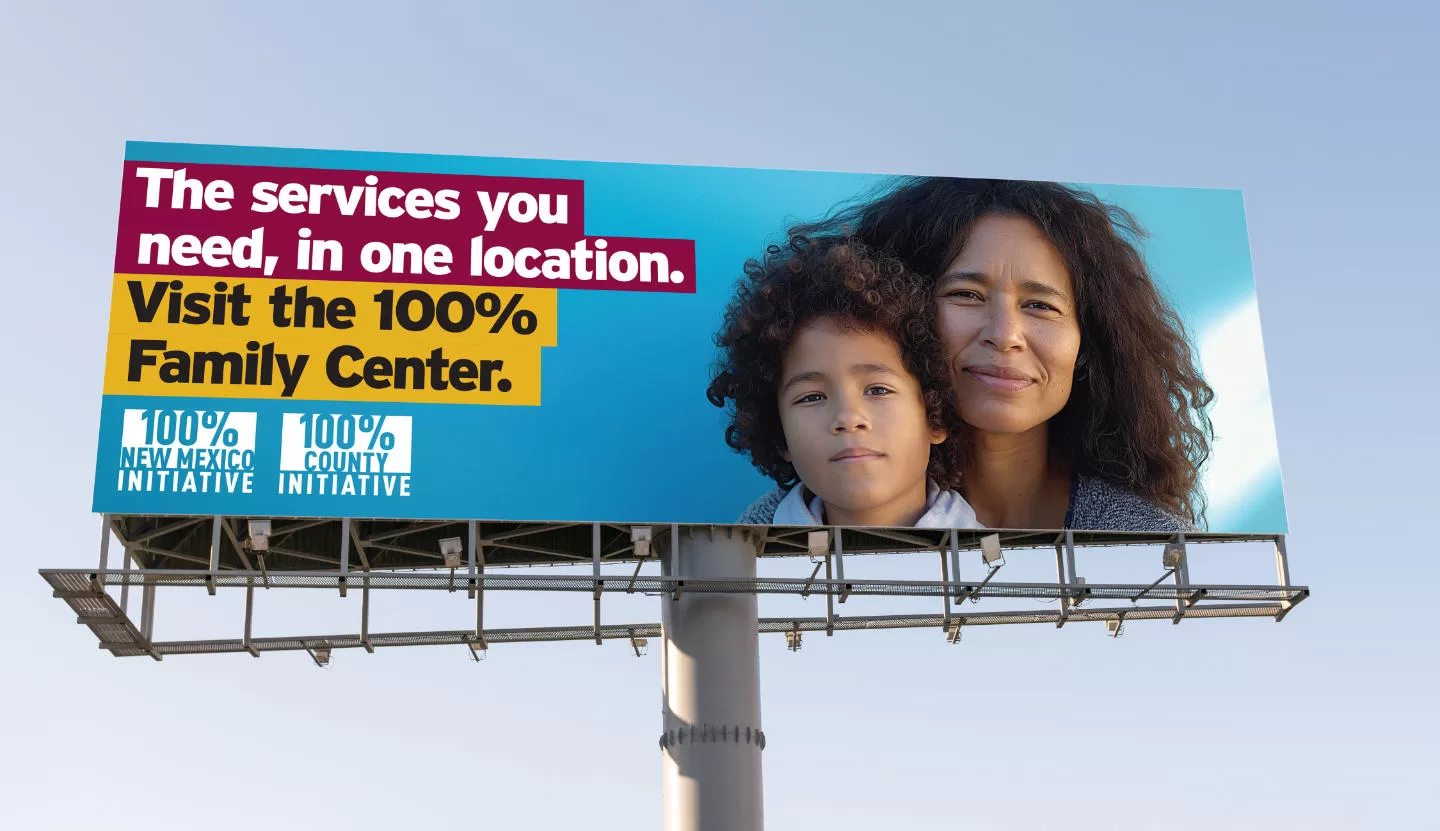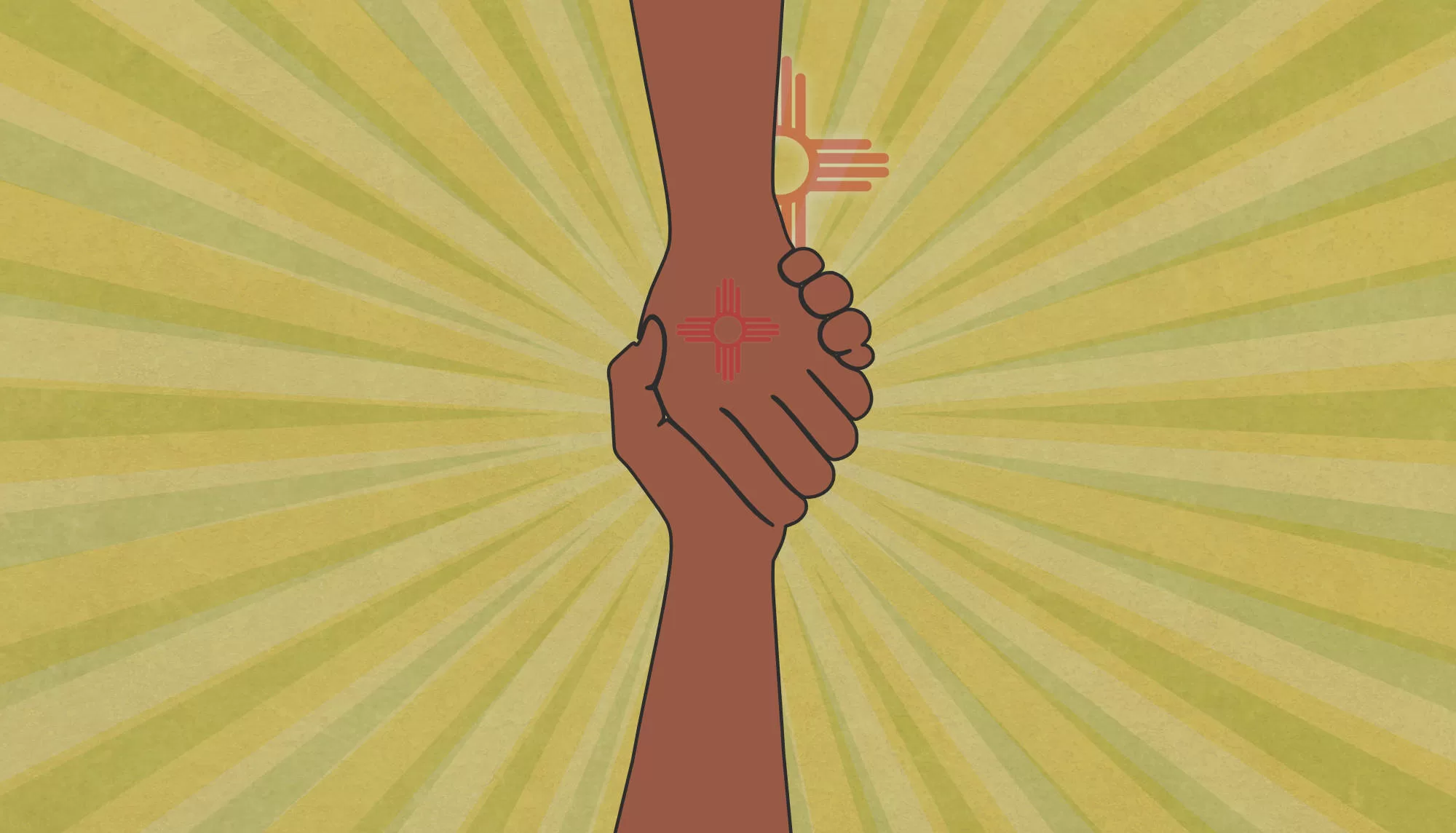How Is New Mexico Doing What’s Never Been Done?
We are constantly asked, how does a state address decades of poverty and all the problems associated with it when change is always so hard? The solution isn’t simple, but positive change arrives with humility, courage, persistence… and a plan.
Katherine Ortega Courtney, PhD and Dominic Cappello
Five years ago, we became co-developers of the 100% New Mexico initiative after researching if any states across the nation had created a seamless system of services to ensure their most vulnerable families could survive and thrive. Our research revealed that no state had a statewide system or plan to ensure all communities had access to ten vital services. Instead, every state defaults to allowing large segments of their populations to live in what public health experts call the adverse social determinants of health. The determinants are the services that determine the health, education, and quality of life of a state’s entire population. With so much need and no ready plan to implement, we committed ourselves to inventing a local process for county stakeholders to identify barriers to vital services and create ways to make them accessible. From this came the book 100% Community: Ensuring 10 vital services for surviving and thriving and the 100% New Mexico initiative was born.
Our vision is a New Mexico where all families can thrive.
The goal of the Anna, Age Eight Institute is to create a New Mexico where 100% of children, students, and families can thrive, addressing two of our state’s most costly interrelated challenges: adverse childhood experiences (ACEs) and the adverse social determinant of health (SDOH). We are dedicated to ending the epidemic rates of ACEs-related trauma (described in the book, Anna, Age Eight) and transforming the adverse social determinants of health into positive ones by ensuring all families have access to ten vital services including medical care, mental health care, affordable housing, food security programs, job training, and transportation.
The article Advancing Positive Social Determinants of health through collective impact and the 100% New Mexico model details our work in 18 counties and outlines how we are doing what’s never been attempted on a state-wide basis. But just because it’s never been done, does not even remotely mean that it is impossible. We are already seeing movement, but success does not happen overnight.
As you might expect, transforming adverse social determinants of health into positive ones across a state of two million residents is a monumental task, requiring infrastructure building, addressing workforce shortages, implementing technology use and data sharing, and reprioritizing government spending.
Is such difficult work worth it? To put it another way, is it worth it to ensure that children, students, and families in the state are able to thrive and succeed, free from the impact of untreated medical and mental health challenges, trauma, hunger, home insecurity, lack of transportation, and inaccessible or under-resourced early childhood education, public education, vocational education, and higher education? We believe the answer is unequivocally, yes.
We support our local initiatives reaching results.
At the heart of the local initiative are action teams representing ten service sectors that provide “surviving” and “thriving” services. One of our keystone projects is to establish in each county a 100% Family Center, a one-stop service hub offering access to all ten vital services, as well as acting as a base of operations for each local 100% New Mexico initiative.
The process to establish 100% Family Centers in every county is complex and requires adaptability at the local level to meet residents’ needs. To ensure we are constantly taking the right approach in supporting the initiative in each county, the institute and our local initiative leaders are working with outside evaluators with expertise in this area.
We’re evaluating each step of the initiative across New Mexico.
The 100% New Mexico initiative is guided by robust evaluation provided by Chapin Hall at the University of Chicago. Chapin Hall focuses on improving the well-being of children, youth, families, and the communities they live in. Chapin Hall combines rigorous research methods and real-world policy expertise to accelerate the use of data and evidence in policy-making and program implementation. To learn more about their evaluation work see their three-part research brief series on the initiative.
Doing what’s never been done is… amazing.
As we discover what works, we then dig in deeper to find out why. We are measuring every aspect of the initiative to capture how it is transforming New Mexico. With this information, the Anna, Age Eight Institute and our local 100% New Mexico initiative partners are writing a state-of-the-art blueprint for transforming adverse social determinants of health into positive ones each day.
The need is urgent in our state, but the opportunities are abundant. We look forward to the day that when a family hears “we’re referring you to services,” we can confidently say that those services exist and that they are accessible in every way. That will be a New Mexico in which every child, student, and family can thrive.
Seek to engage: To learn more, please engage in our self-guide course A Child’s Right to Survive and Thrive.
Did you know? Our transformational 100% New Mexico initiative is guided by web-based, self-paced courses provided free to all New Mexicans.

Don’t miss a blog post! Get notified!
The 100% New Mexico initiative is a program of the Anna, Age Eight Institute at New Mexico State University, College of Agricultural, Consumer and Environmental Sciences, Cooperative Extension Service. Contact: annaageeight@nmsu.edu or visit annaageeight.nmsu.edu to learn more.








